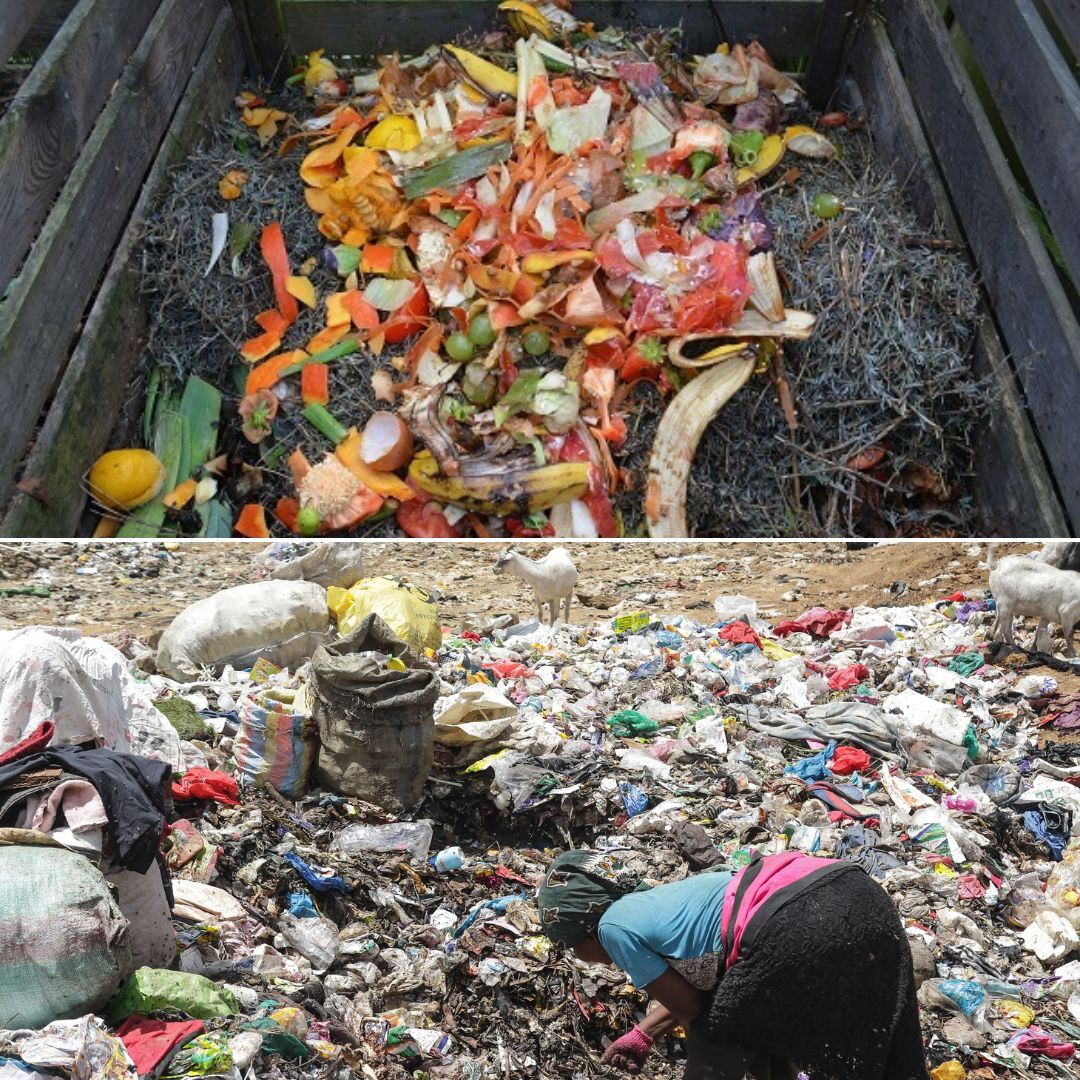
Image Credit: Twitter/ Offsetmyfoodwaste, Harvard (Representational)
Global Concern! Know How Dumped Food Contributes To Carbon Emissions & Water Wastage
Writer: Ronit Kumar Singh
A confident and reliable journalist who always desires to toss the unheard voices. I cover politics and governance extensively through stories.
Others/World, 16 Oct 2022 7:11 AM GMT
Editor : Shiva Chaudhary |
A post-graduate in Journalism and Mass Communication with relevant skills, specialising in content editing & writing. I believe in the precise dissemination of information based on facts to the public.
Creatives : Ronit Kumar Singh
A confident and reliable journalist who always desires to toss the unheard voices. I cover politics and governance extensively through stories.
The World Food Programme suggests that 1.3 billion tonnes of food worth $1 trillion are lost or wasted annually. This causes estimated carbon emissions of 3.3 billion tonnes, directly affecting the atmosphere.
Many people dump or trash their food items when they fear overeating or when their need is satisfied. The untreated leftover food contributes to climate change and affects the existence of life in the long term. Many not-for-profit and private enterprises have taken a step ahead to reduce food waste, but it requires a collective effort from all.
According to the World Food Programme reports, around 1.3 billion tonnes of food worth $1 trillion is lost or wasted annually. Additionally, one-third of all the produced food is wasted before being consumed.
Some experts believe that if wasted food items collectively made a country, then it would have been the world's third-largest producer of carbon emissions, after China and the United States (US).
According to statistics, unconsumed food produces around 8 to 10 per cent of global carbon dioxide emissions, estimated to be around 3.3 billion tonnes. It directly flows into the atmosphere, damaging the same in the long term.
Food wastage doesn't only lead to carbon emissions; it also results in water wastage. In the US, around 21 per cent of the water used to cultivate crops and food items is wasted. Globally, a quarter of produced water is lost in the form of unconsumed food, nearly $172 billion tonnes.
Why Food Waste Is An Irresponsible Act?
In the Food Waste Index Report 2021, the United Nations Environment Programme underlined that about 17 per cent of globally produced food goes to waste, out of which 13 per cent comes from retail, 26 per cent from food service and transportation, and 61 per cent from households.
Apart from climate change, food waste also contributes to increasing garbage load. Ultimately, the pressure is built on waste management mechanisms that direct the trash into landfills and water bodies.
Notably, the statistics for food wastage show a year-on-year increase when hunger strikes the global population. The Food and Agriculture Organisation says that around 690 million people stayed hungry in 2019. If the amount of wasted food is provided to the hungry stomachs, both issues will settle up to a significant extent.
Recently, the global hunger index report revealed that India ranked 101st in the 2021 rankings and has slipped to 107th in 2022 out of 121 countries. The increasing number of hungry stomachs is in the backdrop of increased food wastage, reported The Indian Express.
How To Reduce Food Wastage?
Reducing global food wastage to half by 2030 is one of the top priorities of the United Nations. Many organisations feel that the national plan to slash food wastage is more effective than the global plan. All stakeholders will have to collaborate in the fight against food waste.
Home food wastage is the major contributor to the total burden of global food waste. It's an integral part of every home that indulges in such practices, and all should start working towards its prevention. The role of the retail market and transport sector is also crucial when it comes to the prevention of food waste.
The intervention of technology is essential to keep track of storage temperature and stock of food with retailers. Home composting of food is another way to utilise wasted food into a productive one. It's the most sustainable way of treating food waste that requires minimum effort and gives maximum output.
Also Read: Environmental Conservation! South Central Railway Develops Miyawaki Plantation In Secunderabad
 All section
All section














